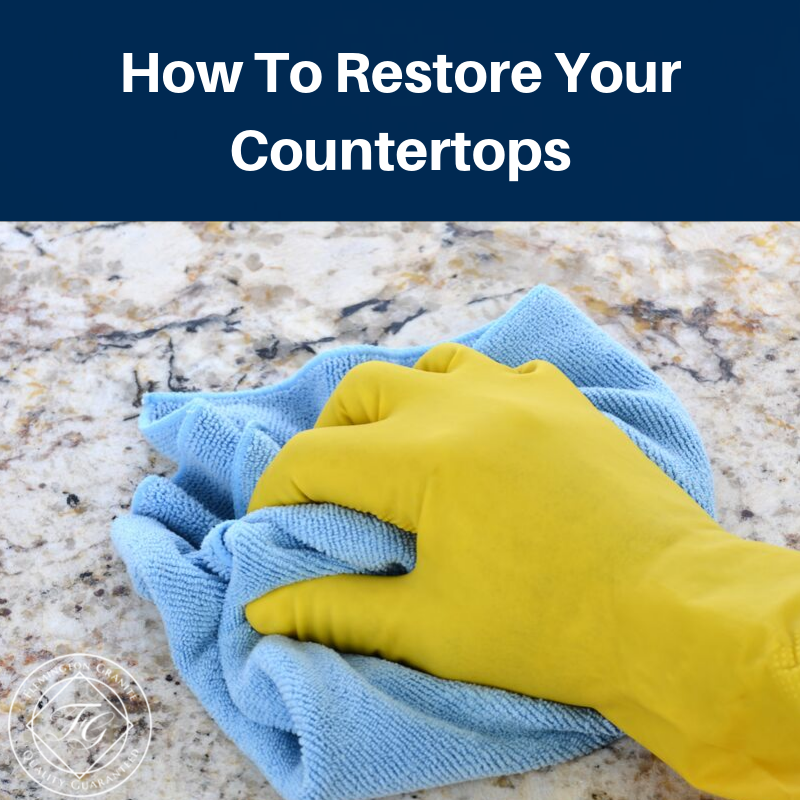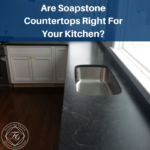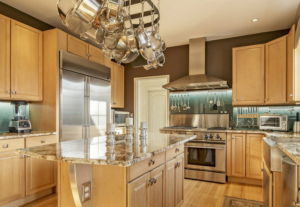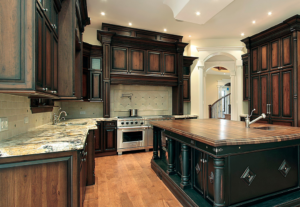
Restoring your countertops can mean several different things. It might involve cleaning and polishing a dull and scratched granite countertop, or it could mean totally resealing, resurfacing, refinishing or even replacing a countertop. So, what are some of the approaches or options to countertop restoration, particularly when you are thinking of rejuvenating your granite countertops?
Polishing
There are polishing techniques that will give granite a completely new and refreshed surface. In comparison to cleaning, this type of restoration or resurfacing allows the removal of a small surface area or layer of granite. This layer can be dull, stained or scratched. Once that layer is removed, a new, fresh and smooth stone is revealed.
How Often Polished
Granite countertop surfaces should usually be polished within a five to 15 year period, but the time frame depends on the amount of use the countertops have received. Once they are polished, granite countertops should also be sealed to protect them from scratches, stains and other possible damage. Granite experts recommend that countertops should be resealed by a professional every two to four years.
Options with Granite Polishing
There are options with polishing that include using wet or dry material, as granite can be polished with either one. There are differences as to which is better, but both are beneficial. There are positives and negatives with both that include:
- – Polishing powder that is dry is less costly than paste formulations.
- – Powder polishes are adaptable as they can be used wet or dry.
- – Wet polishing can be messy and create spray when power tools are used in the polishing process. Plastic covering is necessary to protect kitchen area appliances and cabinets. In addition, protective clothing should be worn to avoid any over-spray.
- – Any pads used with wet polishing will limit heat buildup along with wear and tear on the pads themselves, plus they are less costly than dry pads.
Polishing Powder
Polishing powder that is used on granite is also referred to as stone polishing compound. Using this type of powder or compound is a fast and simple way to give granite a fresh look while getting rid of any small stains or scratches. When it is used in dry form, a buffing pad is necessary to get over the granite in the right pattern. If a wet form of powder is going to be used, a muslin wheel should be the major tool of choice.
Choosing a Compound
Most stone polishing compounds, or polishing powders, can be used on both new and used granite countertops. These powders are usually available in formulations designed for dark and light granite. The main thing to consider is the color of the granite and which compounds are most compatible with either lighter or darker toned stone. Whatever formulation is used, avoid heavy pressure during the polishing process as the compound is the workhorse. Also, follow any product directions carefully and closely. You’ll have good results whether you are maintaining granite countertops or restoring them.
Polishing Creams
Polishing creams are usually designated for use on granite countertops that are either engineered or natural stone. They consist of less heavy abrasives that are suited for high end manufactured granite with rich finishes. Many cream combinations are perfect for restoring original granite finishes as well as bringing back their shine and original luster. Buffing out with these creams is usually done with either pads made of hog hair or comparable materials.
Resealing
Resealing is another option when it comes to restoring your granite countertops. If both cleaning and polishing are not doing the trick, you might want to check to see if resealing is required. You can test to confirm whether you do need to reseal. Just sprinkle some water onto your granite countertops and wait for the water to either dissolve or be absorbed. If the water has passed through the surface, you probably need to reseal the countertops yourself or consult with a professional about doing it. Without the proper sealing process, the granite beneath any older sealer will likely continue to show stains and damage.
Resealing Process
The resealing process involves using a permeating type of stone sealer that reaches deeply into the granite and will fight off stains and keep bacteria at bay. This kind of sealer will also make cleaning a lot easier. Food and liquids can simply be wiped away without any trouble.
If you do decide to apply the sealer yourself, you should completely clean your countertops first. It is advisable to use a cleaner that is specifically designed for granite. Once you have used the cleaner, allow the countertops to thoroughly dry before applying the sealant.
Sealant Application
Once your granite countertops are prepped, utilize a clean, white cloth that is free of lint to apply the sealant. You don’t want to pour out too much of the sealant as you’ll experience drips and accumulation of it on your countertops. Just make sure that coverage is complete on all edges and backsplash areas. Apply the first coat and allow it to thoroughly dry before any second coat is applied. Once the second coat is applied, wait at least 24 hours before using your countertops.
Repairing Granite Countertops
If your granite happens to have small dings and scratches, there are epoxy fillers or resins that can help repair them. Home improvement, hardware and remodeling stores usually carry these type of repair items for purchase. Once the epoxy or resin is applied, allow it to dry. Then, sand the areas and reseal them. Any larger kind of cracks or other repairs should probably be left to an expert.
Replacement
Even with polishing and resealing, and constant care, a granite countertop may not acquire a totally restored condition, especially if the countertop has gone past the 15 year mark. Replacement may be one of the few options available to obtain a finished and restored appearance, which can be costly. If you don’t want to go to the expense, refinishing material may be a less pricey route to take. Also, replacing your granite countertops doesn’t have to be a total loss if you research and find wholesale dealers, styles that are discontinued or leftover pieces and remnants that will make any replacement a lot less expensive.
If your granite countertops are starting to take on a dull and scratched appearance even with faithful cleaning and polishing, it may be time to think about restoring them to their original finish. The ideas presented here will give you a jump start on bringing back your granite countertops to what they once were. Complete the contact form here to find out more about granite countertop restoration. An expert will get back to you with the answers you need to start your countertop restoration.






